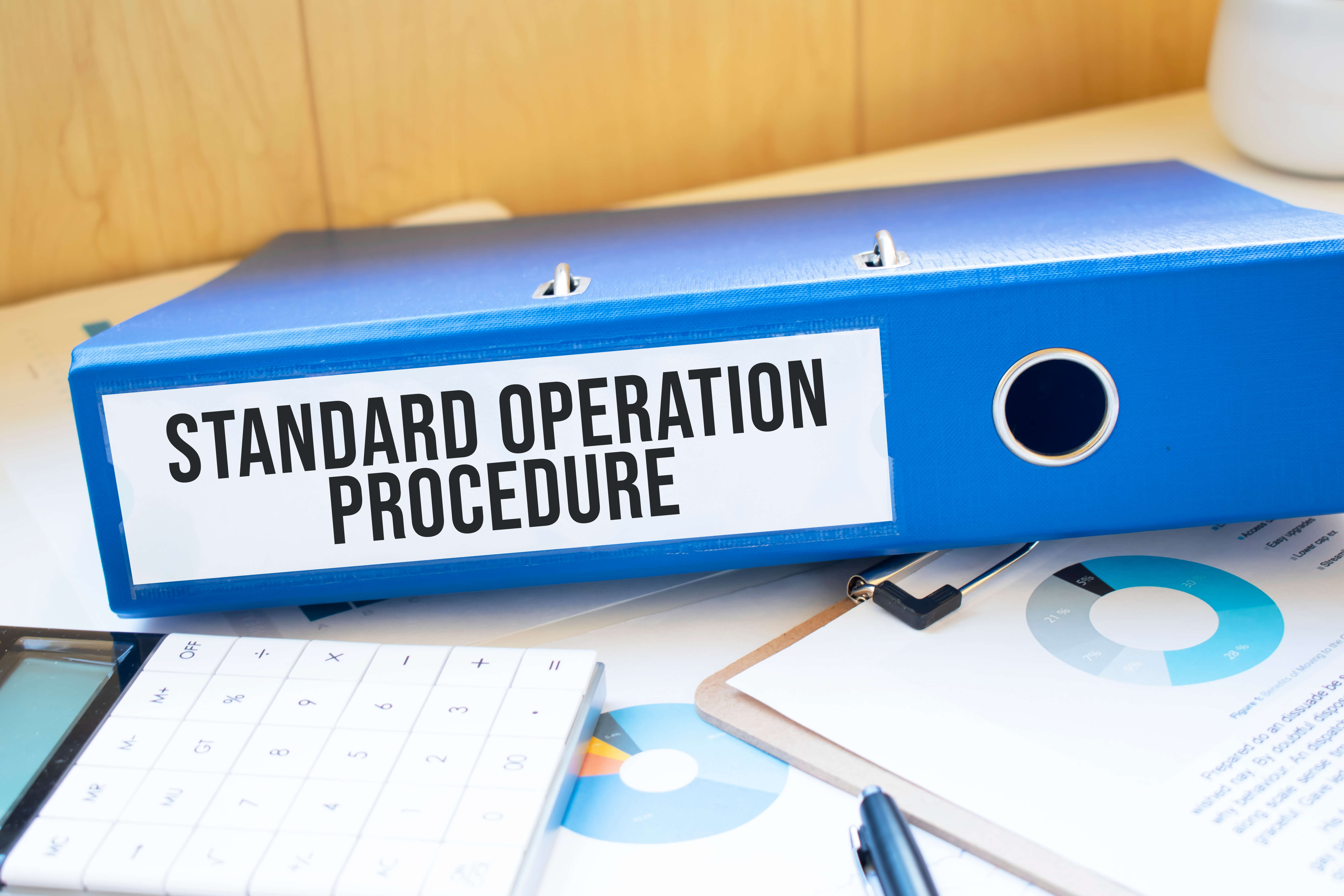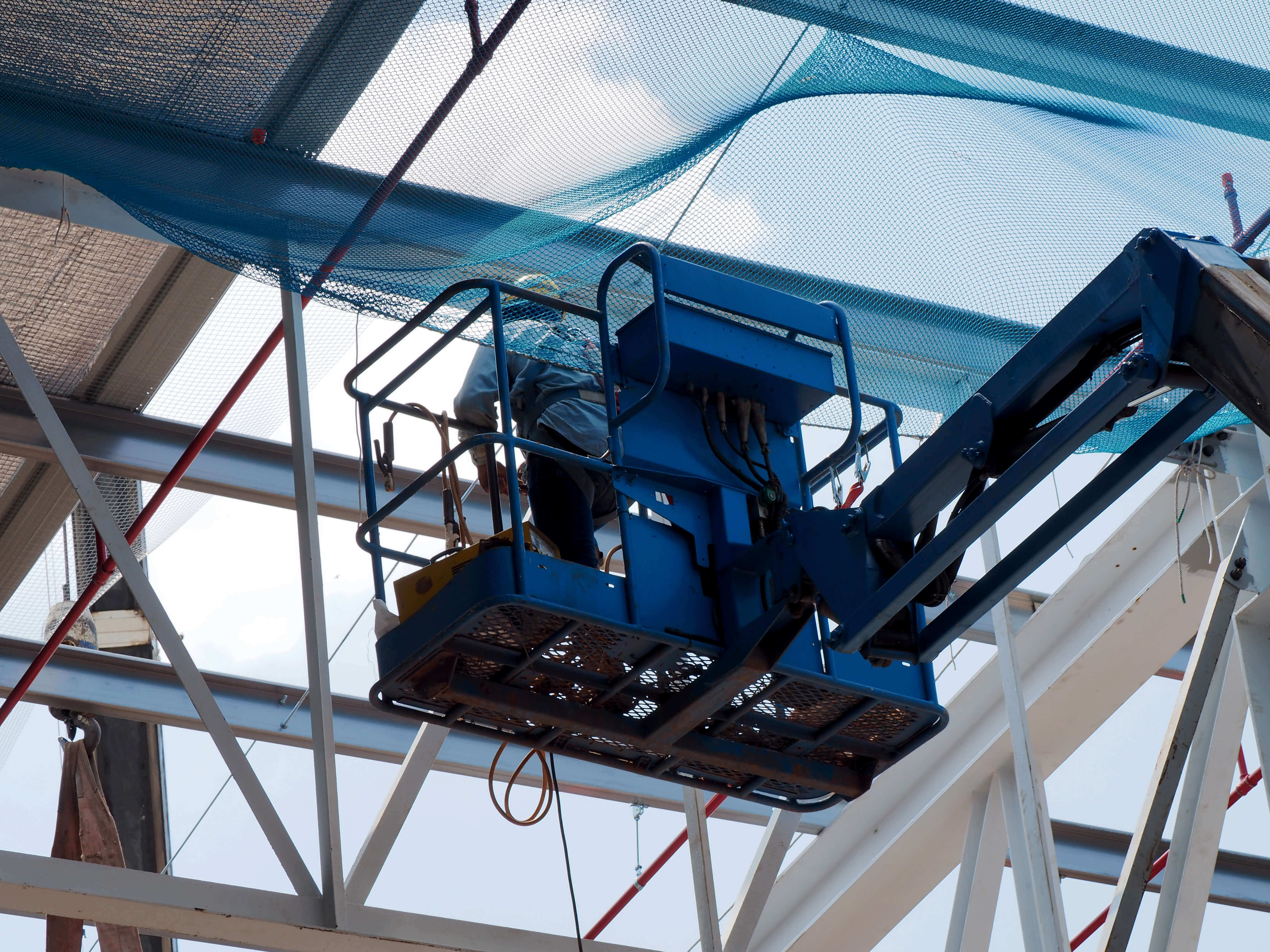Today marks the start of fire door safety week, highlighting the crucial role a fire door can play in a fire by saving lives and protecting personal and commercial property.
We've put together a checklist to help you ensure the fire doors on your premises are performing in the way they should.
If you need immediate support or advice, get in touch with one of Croner's health and safety experts on 0800 141 3593.
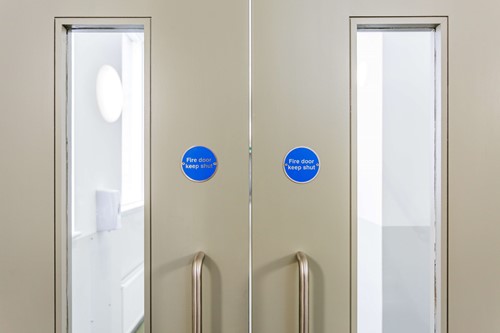
What are fire doors?
Fire doors are integral to a building's fire safety procedure and defences. Fire doors are designed to be physical barriers around a building to stop the spread of a fire.
Fire doors are made from a combination of different materials such as timber, gypsum, aluminium and steel.
Where some fire doors have windows, they are made from a fire-resistant material such as ceramic glass, that has a higher resistance than standard glass. This type of glass is typically reinforced with an anti-shatter wire mesh.
There are different grades of fire doors that you should be aware of, each one will offer a different level of protection. These grades indicate how long they can withstand a fire, the following are the most common.
- FD30 can withstand up to 30 minutes.
- FD60 can withstand up to 60 minutes.
- FD90 can withstand up to 90 minutes.
- FD120 can withstand up to 120 minutes.
According to the government's fire safety approved document B, fire doors are required in domestic buildings that are:
- Over two storeys tall.
- At each door leading to a stairwell (every level) from a habitual room.
In commercial buildings, the fire door requirements may vary depending on your escape routes (vertical and horizontal), but typically that is down stairwells and through corridors.
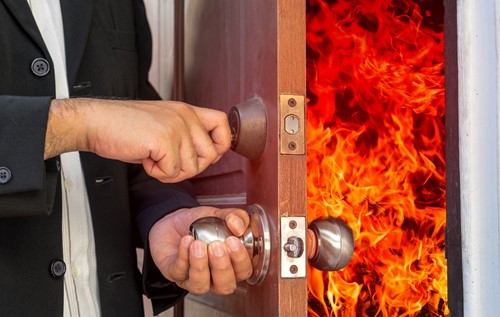
What is a fire door checklist?
This checklist plays a part in your fire risk assessment. They are used to ensure fire doors are up to standard and aren't broken or defective.
This check should be carried out regularly, as it not only saves lives but can also protect other parts of the building from the fire. This can also help you keep on top of any repairs or maintenance that the doors need.
A fire door plays a crucial part in preventing the spread of fire and smoke. If anyone sees a fire door that isn't in good working order, or if it has any damage, in these instances it should be inspected and reported to the building owner as it could risk lives if it's not repaired.
Here are the steps you should take when looking at your checklist.

Step 1: Certification
You should look for signs of the label or plug (or similar marking) on the edge of the door.
This will identify that the door is a fire door, and tell you who the manufacturer is, when it was manufactured and the fire rating of the door.
You should remember that the ironmonger (locks, latches, closers and hinges) should be marked with a 'CE', and must be compatible with the doors leaf certification.
Step 2: Apertures
If the door has been changed, modified or altered for glazing apertures, and air transfer grills the certification is void.

Step 3: Gaps and Seals
You should check the gap around the door frame and ensure it's consistent at around 3 or 4mm (the thickness of a pound coin) and the hinges (that are CE marked) are firmly fixed with no missing screws.
You should also check that seals are in place at the top and sides of the door. The seals will help prevent smoke and fire getting through the fire door.
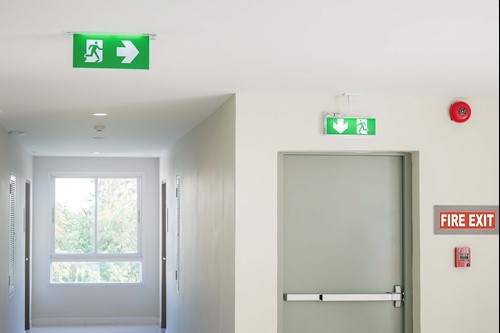
Step 4: Closures
Ensure that the door closes properly onto the latches from any position, check from 75mm from the closed position.
Step 5: Operation
You should ensure that the door closes shut properly around each part of the frame.
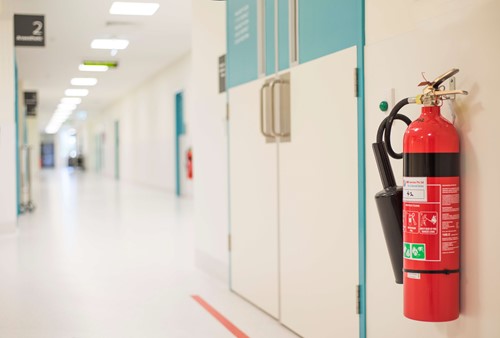
Download a checklist
At Croner, our health and safety experts have put together a checklist for you to use when checking your fire doors and an infographic that you can use in and around your business premises.
Speak to an expert
For advice on H&S in your business or workplace, including health & safety training, and health & safety consultancy, and fire safety, speak to one of our experts.
Croner has a team of award-winning health and safety consultants who are specialists in their field. We've been helping businesses for over 80 years and our advice line is open 365 days a year, 24 hours a day. Why not speak to a Croner expert on 0800 141 3593.
Related resources
Categories
- Business Advice
- Contracts & Documentation
- Culture & Performance
- Disciplinary & Grievances
- Dismissals & Conduct
- Employee Conduct
- Employment Law
- End of Contract
- Equality & Discrimination
- Health & Safety
- Hiring & Managing
- Leave & Absence
- Managing Health & Safety
- Moving
- Occupational Health
- Pay & Benefits
- Recruitment
- Risk & Welfare


